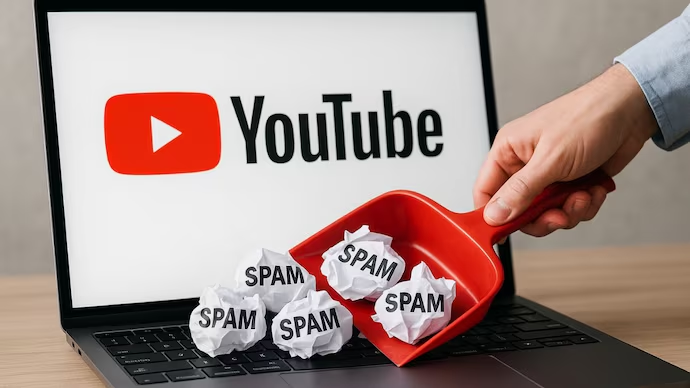In a major move to clean up the growing clutter of low-effort AI content, YouTube is updating its monetisation policies starting July 15, 2025. The new rules will target mass-produced, spammy AI-generated videos that lack originality and substance—often referred to by critics as “AI slop.”
Why did YouTube change the policy for its content creators?
YouTube has been aiming to protect genuine creators and reduce the number of channels, mainly by stopping the misuse of the platform by uploading content that is:
- Clickbait
- Low-quality
- Repeated videos
The company further emphasised all the content that should contribute to education or entertainment, and not just any video, which has been created to chase views only.
Repeatedly posting the same types of videos, like reaction mashups, AI-generated slide shows or overly edited versions of someone else’s content will now lead to monetisation restrictions for the creators.
The rise of generative AI tools has led to a flood of hastily made videos using:
-
AI-generated voices
-
Stock visuals
-
Recycled content
These videos may rack up views, but many fall short on quality and creativity, core values that YouTube says it wants to protect.
“This update better reflects what ‘inauthentic’ content looks like today,” YouTube stated in its July policy release.
- Focus on originality and authenticity: YouTube emphasizes that content creators need to upload “original” and “authentic” content to be eligible for monetization.
- Crackdown on mass-produced and repetitive content: YouTube is updating its guidelines to better identify and target content that is mass-produced or repetitive. This includes content created in bulk with minimal human input, automated presentations with synthetic voices, and videos that reuse formats or styles without offering distinct value.
- Impact on AI-generated content: While YouTube hasn’t explicitly banned AI content, the updates are expected to affect channels heavily reliant on AI voices, avatars, or automated scripts, particularly those creating low-effort or repeated videos. However, AI-assisted content can still be monetized if it is unique, significantly transformed, and provides added human value.
- Consequences for policy violations: Channels found violating these new guidelines may face removal from the Partner Program and will only be able to reapply after addressing the violations. Monetization may also be suspended or permanently disabled on all or any of a creator’s accounts.
- No changes to reused content policy: It’s important to note that YouTube clarified that there’s no change to their reused content policy, which reviews content like commentary, clips, compilations, and reaction videos.
What’s Allowed and What’s Not?
Not allowed (ineligible for monetisation):
-
Mass-produced, repetitive, low-effort videos generated entirely by AI
-
Spammy content with minimal human input
Still allowed (eligible for monetisation):
-
Reaction videos
-
Transformative content using clips with added value, commentary, or creativity
“This is not new,” said Rene Ritchie, YouTube’s Head of Creator Liaison. “Repetitive, low-effort content has never been eligible for monetisation.”
Other Platform Changes
YouTube is also adjusting its ad sensitivity categories:
-
The “Bare Skin (Image Only)” ad category will be removed from July 15.
-
Creators must update their ad filters by August 15, with recommended categories like “Reference to Sex” for more accurate settings.
This isn’t just a policy update—it’s a signal to creators. YouTube is making it clear that quality, originality, and human creativity are essential for earning ad revenue on the platform. As AI tools evolve, YouTube is drawing a firmer line between automated content farming and authentic storytelling.








